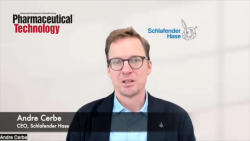
OR WAIT null SECS
- About Us
- Advertise
- Contact Us
- Editorial Info
- Editorial Advisory Board
- Do Not Sell My Personal Information
- Privacy Policy
- Terms and Conditions
© 2025 MJH Life Sciences™ , Pharmaceutical Technology - Pharma News and Development Insights. All rights reserved.
Pharmaceutical Tariffs Are Imminent: How Industry is Bracing for Impact
On April 14, 2025, the Trump Administration launched a national security-driven investigation into pharmaceuticals, a move that will likely result in tariffs being placed on pharmaceutical drugs, ingredients, and other components that are imported from outside of the United States.
With news that the US Department of Commerce has initiated a national security-driven investigation into the import of pharmaceuticals and pharmaceutical ingredients, including finished drug products, active pharmaceutical ingredients (APIs), and their derivatives, it appears all but imminent that tariffs will be levied against these items in the near future.
In fact, Commerce Secretary Howard Lutnick said in an interview on Monday that "semiconductors and pharmaceuticals will have a tariff model in order to encourage them to reshore to be built in America," noting that the tariffs would be implemented within the "next month or two."
Pharmaceuticals have so far been spared from the Trump Administration's reciprocal tariffs that were first announced on April 2, 2025. Since then, the Administration has placed a 90-day pause on most of those tariffs as negotiations take place. Still, the pharmaceutical industry is likely to see tariffs of 25% or more levied on drug imports, according to statements made by the President.
That move would be significant for drugmakers, given that a majority of APIs used in the US market are produced and imported from abroad from countries including China, India, and Ireland, among others.
Seeing what's on the horizon, major drug makers including Johnson & Johnson, Eli Lilly, Merck, and Novartis have announced multi-billion-dollar investments into expanding their US-based manufacturing to fulfill the needs of the US market on its own turf.
Reshoring efforts may be underway, but the threat of disruptions in the supply chain from impending tariffs seems to be driving a surge of exports from some of the world's biggest suppliers. According to a report from Ireland's Central Statistics Office, pharmaceutical exports to the US increased nearly 280% in February 2025 versus the same month last year, suggesting that the US industry may be trying to stockpile pharmaceuticals in preparation for what lies ahead.
During its Q1 earnings call this week, Johnson & Johnson CEO Joaquin Duato said, "There's a reason why pharmaceutical tariffs [have historically been] zero. It's because tariffs can create disruptions in the supply chain, leading to shortages." He continued, saying, "if what you want is to build manufacturing capacity in the US, both in medtech and in pharmaceuticals, the most effective answer is not tariffs, but tax policy."
Johnson & Johnson estimated its potential tariff impact at around $400 million in 2025, primarily driven by China's retaliatory 125% import tax on US goods that would impact the company's medtech products that are shipped to China.
Still, Duato doubled down on the company's capital investment in reshoring manufacturing, saying that the $55 million, 4-year plan to build out US production infrastructure would result in "essentially all [of] our advanced medicines that are used in the US [being] manufactured in the US."
While industry has begun to react to the cues put out by the Administration, many are still feeling a great deal of uncertainty about what lies ahead. During interviews with Pharmaceutical Technology that took place earlier this month at INTERPHEX 2025, industry leaders expressed a range of emotions, from cautious optimism to concern about potential negative impacts on US investment in technologies developed abroad.
"The biggest impact right now is on our ability to price components and lead time for things," said Peter Sarvey, head of sales for Automation NTH. "A lot of quotes, we would say, 'Here is a proposal for an automated system or automation line,' and that would be valid for 30, 60, 90 days or so. [Now] we have to make sure we keep a closer eye on things as the global dynamics of sourcing change. We do final assembly, and everything is designed and built here in the States for Automation NTH, but a lot of the components that we get, whether they be raw materials, aluminum, steel, or even the electronic components like sensors, cameras, or robots, are coming from overseas."
Despite the uncertainty around the cost of goods and the downstream impact of those changes, some representatives are looking at the reshoring efforts as an opportunity for innovation.
"If we think about the impact that it potentially can have on the biologics industry, for example, it provides not only an opportunity but a strong incentive to on-shore manufacturing and potentially to actually do it in a way that, combined with automation, can create a kind of facility of the future," said Kerry Love, PhD, co-founder, CEO and president of Sunflower Therapeutics. "That's more of a distributed manufacturing concept or a micro facility like we're seeing revolutionize the electric vehicle space or new textiles or food production. So I think it's just time that we think about how this could be a driver for us to do something similar for protein and biologics production."
Click here to view the full interviews with industry experts from INTERPHEX 2025.



